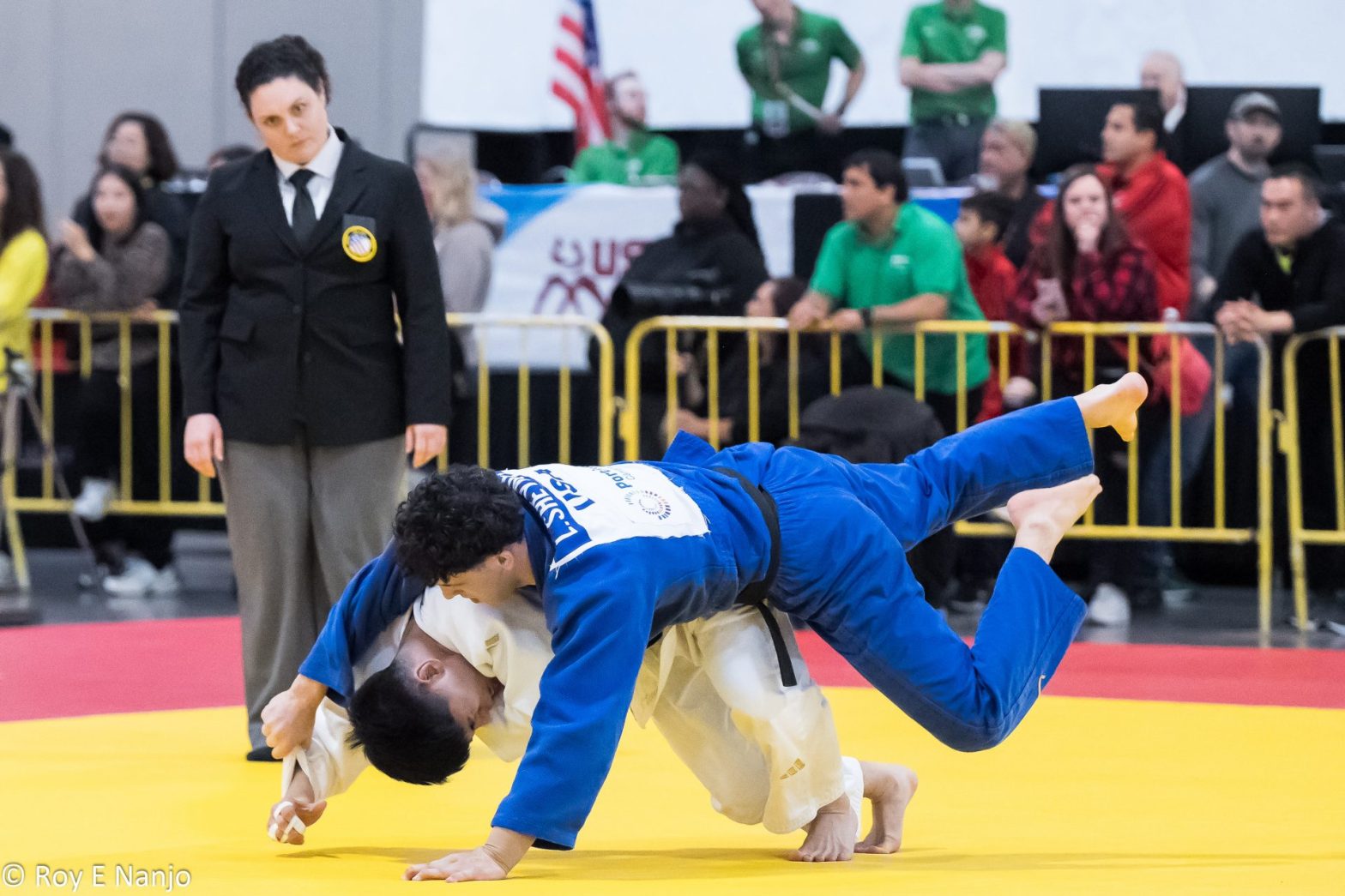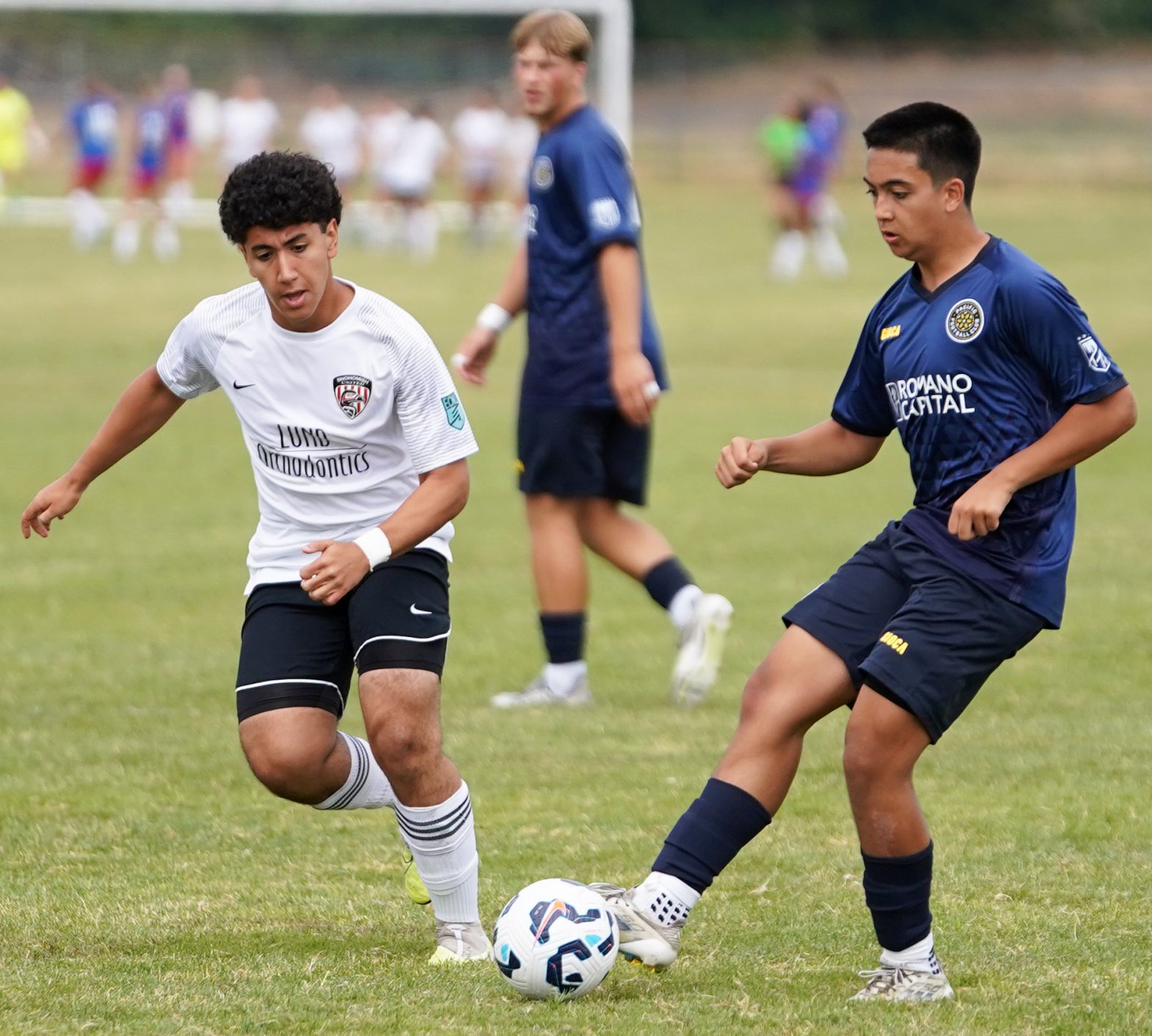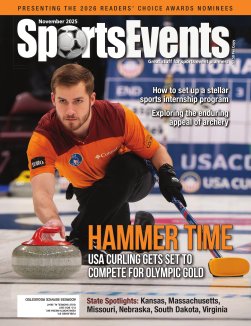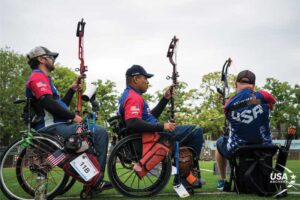
While the bow and arrow lost its place in combat to crossbows and later gunpowder, archery still saw extensive use in hunting and, especially, in recreation. In fact, the first known organized competition in archery was held at Finsbury, England, in 1583 and had 3,000 participants.
Competitive archery continued even into the modern era. Archery was an Olympic sport from 1906 to 1920 and returned to the Games in 1972, remaining part of the Olympics ever since.
According to the online Encyclopedia Britannica, the first American archery organization was the United Bowmen of Philadelphia, founded in 1828. In the early days, the sport was, as in England, a popular upper- and middle-class recreation. In the 1870s, many archery clubs sprang up, and in 1879 eight of them formed the National Archery Association of the United States.
Today, archery is now a sport of all socio-economic backgrounds and there are a few organizations devoted to it on multiple levels, from grassroots clubs to top-flight national and international competitions. Tournaments are regularly held in every state and at a national level several times a year. The Las Vegas Shoot, perhaps the largest and most prestigious indoor archery tournament in the world, brings together nearly 4,000 archers from around the globe, ranging from beginner archers to Olympic champions, competing in categories such as senior, youth, compound, and recurve.
The ins and outs of archery
There are a number of styles in archery competitions, the most popular being target and indoor archery where competitors shoot at stationary targets from measured distances; field archery shooting at targets from various distances in an outdoor setting; 3D archery, shooting at faux animal targets in fields and woods; flight archery, shooting for maximum distance with little or no regard for accuracy; clout, shooting arrows at a flag (known as “the clout”) from a relatively long distance; and para archery.
Today, the sport is overseen by USA Archery. It is responsible for selecting and training men’s and women’s teams to represent the U.S. in the Olympic, Paralympic, and Pan American games.
USA Archery director of marketing Emily Beach says modern archery is a truly open and accessible sport. “We are committed to providing equal sports and recreation opportunities to every person,” she says. “Archery is a sport that is open to everyone; it is inclusive of all ages, genders, and abilities.”
The mission of USA Archery, she explained, is to foster strong athlete participation, competition, and training in the sport. “As one of the most adaptable sports in the world, archery is open to everyone, regardless of age, gender, or ability, and it’s a sport in which anyone can participate in so many different capacities.”
USA Archery fosters archery at the grassroots level, starting with its instructor and coach certification program. “USA Archery is nationally recognized for our coach certification courses, which form the foundation of [our] programs, camps, and overall athlete development pipeline,” says Beach.
Explore Archery is a beginner program designed to ignite a love of archery and introduce the fundamentals before Junior Olympic Archery Development (JOAD), a youth program aimed towards forming young athletes. The Adult Archery Program parallels JOAD for archers who first find the sport in adulthood or those who want to carry on from childhood. Young people and adults can become involved by attending a USA Archery outreach program held regularly around the country. Individuals merely need to express their interest, sign up at various event locations, or online and join in the fun.

Archers who want to progress further in the sport into elite competition may join the national or regional elite programs for camps throughout the year or join the resident athlete program where they live together and train full-time.
USA Archery’s Collegiate Archery Program welcomes archers into varsity teams and club programs and fosters the growth of new programs. It also offers support to individual archers in the varsity system. USA Archery says there are more than 100 schools that have varsity teams, club teams, and recreational archery programs. Other archery organizations offer college scholarships that range from $250 to several thousands of dollars. Students applying must be members of the organization and maintain minimum grade point averages and compete in archery while attending college.
Each year at the JOAD National Target Championships, youth archers from across the country gather to compete for college scholarships. The scholarships are offered directly from colleges and universities to top-finishing male and female archers in varying recurve, compound, barebow (recurve), and fixed pins divisions.
There are other national archery organizations, including the Archery Shooters Association (ASA), which bills itself as the leading 3D archery association in America. Owner Mike Tyrell says: “We currently have over 10,000 members who are active at our 330 ASA Federation Clubs in 32 states, as well as participating on the McKenzie Delta ASA Pro/Am Tour.”
The tour features six national events that draw professional and amateur archers from across the country, as well as internationally. Each of these national Pro/Am events draws an average of 1,600 competitors and with sponsor contingency awards, the payback is well over $1 million annually in prize money to both professional and amateur classes. “We are proud to have consistent growth at both our club and national events as we host youth as young as six years old, as well as `kids’ in their 70s and 80s enjoying themselves.”
Anthony Marino, the owner of the independent Archers Association, said his group has 1,500 members and is growing. “The association appeals to men and women and young people. I feel our organization is different from other archery organizations due to how we prioritize members’ feedback. It is essential to the success of Archers Association to listen to its members.”
For those wishing to take their horse along for the ride, the Mounted Archery Association features a very different and specialized archery experience that combines the sport with skill as a horseperson. The group was started in 2007 with a handful of members and chapters, explains spokesperson Bethany Flick. “We now have 558 members, 21 registered instructors, and 24 active chapters spread out over 15 states. One thing we attribute our growth to is our national ranking system and very active members who dedicate their time to the growth of youth in the `sport.’ The term ‘sport’ is used loosely as some see it more as a martial art because historically it was.
“We encourage all ages and genders,” says Flick. “Our youngest member is nine and our oldest member is 74. This is one unique sport where we all compete against each other, but most importantly we are competing against ourselves. We are one community; we support one another and cheer everyone on.”
“One cannot do this without the partnership of their horse. As well as learning archery you need to be a very well-established rider. We ride hands-free cantering or galloping through an open field or track. We aren’t standing still on the ground. We need to take into consideration the factor of drift; the pace your horse is going affects the drift of your arrow. Also, take into consideration the amount of training the horse requires to get to a point where you can control its speed and direction with just your body and no hands.”
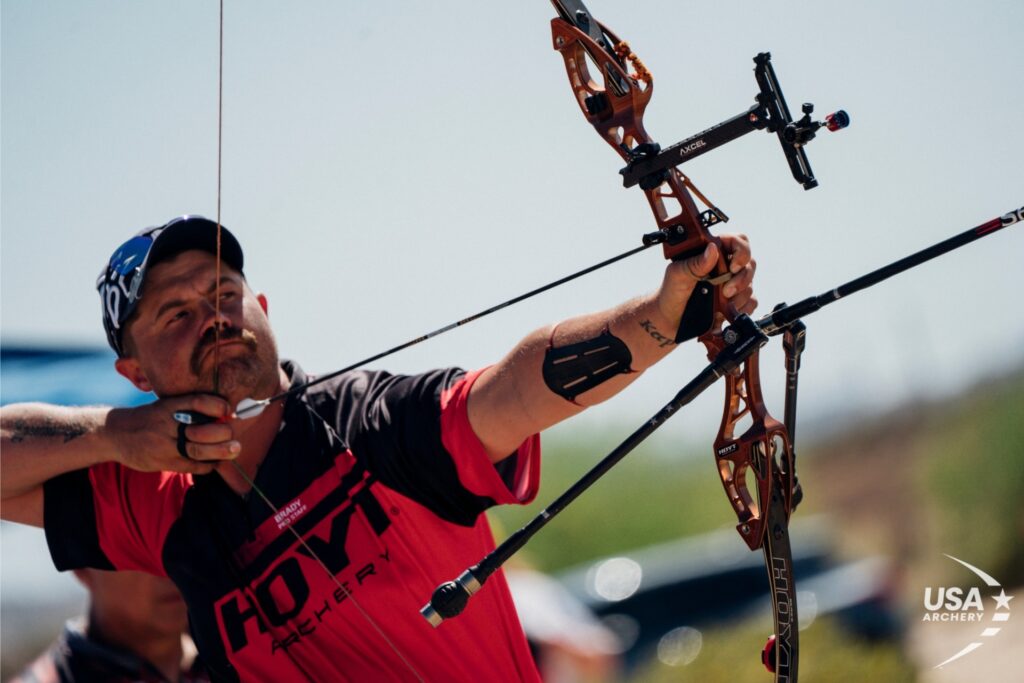
Most of the Mounted Archery Association’s major events are national ranking competitions. Clubs must submit applications to the board of directors for approval. “This is important for safety reasons and to make sure all the tracks are standardized so everyone is competing in the most similar conditions as possible. We call these events horseback archery ‘eventing;’ it combines different sets of skills within the sport to be assessed so to not have one skill outweigh the other,” Flick says.
Some mounted archers can dominate a course called the “raid” where the faster you go the more bonus points you get. On the “tower,” the rider/archer slows down and shoots many arrows. The “hunt” is versatility and horsemanship as there are no barriers for the horse. Targets are typically 80 to 90 cm and range from 16.4 ft (5 m) to 148 ft (45 m) in shooting distance.
“Scores are recorded by our organization,” says Flick. “We create a national ranking. You need two qualifying scores from each course to enter onto the ranking list. Every two years the top three on that list will go to the IHAA (International Horse Archery Alliance) world championships. This year we will be competing in Mongolia with over 30 other countries that also send their best athletes.”
Beyond the national organizations, there are several state level organizations to serve as starting points for interested individuals. From recreation to topflight competition, traditional shooting to the super challenging and specialized archery done while riding a horse, the sport has a dedicated following, whether it is individuals using it as simple recreation or those who desire to compete at the highest level.






